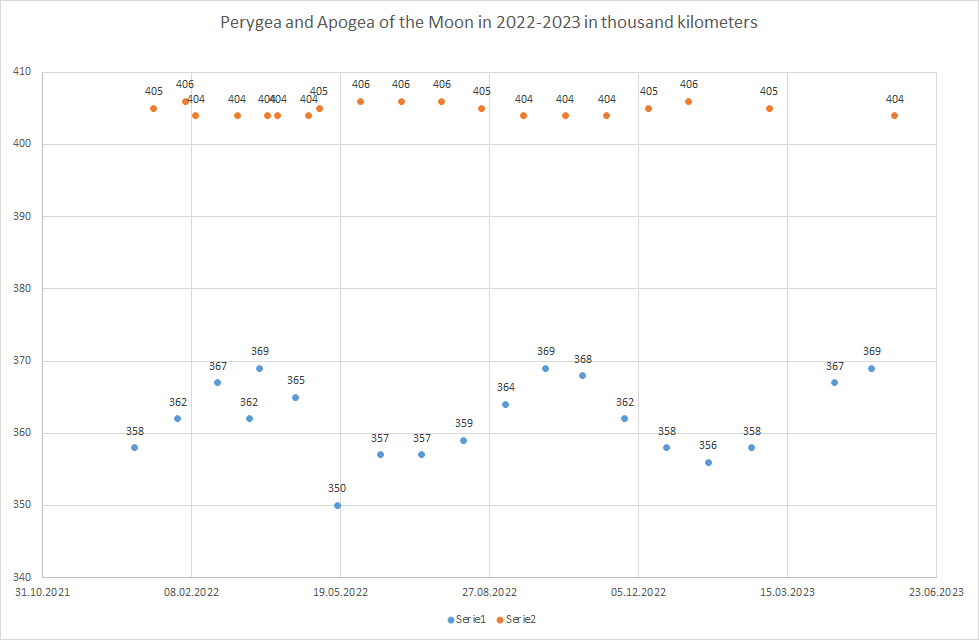El Niño and La Niña occurrences and the phases and perigee of the Moon's orbit
Bogdan Jacek Góralski
Abstract
For 19 years I have been conducting independent research on the causes and effects of climate change. I described the results of the research in the Polish-language book entitled Historia naturalna i zmiany klimatu and in the English-language book entitled The new look at the Earth's climate mechanism and the Cosmo-geophysical system of the Earth published in November 2019 in Google Books. Since then, I have been constantly working on my concept of the Earth's climate mechanism. In the following work, I present an explanation of the variability of the ENSO phenomenon and other ocean-climatic processes on the globe, which are related to the variability of the gravitational forces of the Moon and the Sun acting on the Earth's oceans and atmosphere.
For 5 years I have been running a Facebook group called Długoterminowa prognoza pogody, where I publish weather forecasts for Poland based on the LOD (length of day) variability forecast published 182 days ahead by Paris Observatory IERS Centers.
Long-term comparisons of LOD variability with climate change over Poland have proven the existence of a strong correlation between LOD and weather changes. The analysis of LOD observations and the climate of Poland resulted in this work explaining the repetitive phenomena shaping weather and climate changes on our globe.
Introduction
The Moon and the Sun act upon the Earth, the oceans, and the Earth's atmosphere by gravity. The Sun's gravitational force is due to its mass and the Moon's gravity is due to its proximity. On the days of the new moon (NW) and its full moon (FM), the interaction of the Moon and the Sun exerts the greatest influence on the Earth's geophysical system and is most noticeable during the perigee of the Moon's orbit. During the high synchronicity of the dates of NM, FM, the perigee of the Moon's orbit, the La Niña climatic and oceanic phenomena occur as well as strong global changes in the distribution of ocean waters with different sea surface temperatures (SST) as well as highs and lows of the Earth's atmosphere.
During the asynchrony of the dates of occurrence of NM, FM, the perigee of the Moon's orbit, the El Niño climatic and oceanic phenomenon occurs, and strong global changes in the distribution of masses of the Earth's atmosphere differing in air density and strong global changes in the distribution of waters differing in density and temperature (SST) oceanic waters which are also affected by the centrifugal force resulting from the linear speed of the Earth's rotation.
Data sources:
https://www.timeanddate.com/astronomy/moon/distance.html?year=2022&n=262
https://www.kalendar-365.pl/ksiezyca/fazy-ksiezyca.html
https://www.ospo.noaa.gov/Products/ocean/sst/anomaly/2017.html
https://squall.sfsu.edu/crws/jetstream.html
https://psl.noaa.gov/enso/mei/
https://www.met.ie/weather-forecast/shannon-airport-weather-station-clare
https://origin.cpc.ncep.noaa.gov/products/analysis_monitoring/ensostuff/ONI_v5.php
The perihelion of the Earth's orbit 141.7 million km -2 January 4
Aphelion of the Earth's orbit 151.2 million km - approx. 4th of July
The perigee of the Moon's orbit is approximately 360,000 km
The apogee of the Moon's orbit is about 405,000 km
The ellipse of the Moon's orbit rotates counterclockwise every 8.85 years -3233 days
The synchronicity and asynchronicity of the perigee dates with the New Moon and the Full Moon result in the occurrence of El Niño and La Niña:
2003 asynchronous dates of FM and NM perigee ----- occurrence of El Niñ
2008- NM synchronicity of the perigee and FM January-May, August-November- La Niña occurrence
2009 perigee, FM and NM asynchronic dates ---- El Niño occurrence
2010 FM synchronicity of the perigee and NM January-May, June-November- La Niña occurrence
2016 synchronicity of perigee and NM February-June, asynchronicity of perigee and FM -January-June- occurrence of El Niño
2016 synchronicity of the perigee and the Moon's FM July-August-occurrence of weak La Niña August-December
2017 synchronicity of perigee dates, NM March-August, the synchronicity of perigee and FM November December-October-December occurrence La Niña
2018 synchronicity of perigee and FM January-March, the synchronicity of perigee and NM March-September-occurrence of La Niña January-April
see ENSO Index values:
https://origin.cpc.ncep.noaa.gov/products/analysis_monitoring/ensostuff/ONI_v5.php
Summary
The action of the gravity of the planets in the solar system on the Earth causes the Earth's coating to move (under the relatively stationary Earth's atmosphere) causing regional climate changes. The movement of the Earth's coating since the mid-nineteenth century has caused regional warming and the shift in precipitation zones to be greatest in amplitude and most felt in North America and East Asia. The gravitational influence of the Sun and the Moon on the Earth's geophysics causes ocean and atmospheric phenomena that shape the Earth's climate, including the phenomenon of ENSO variability depending on the synchronism and asynchrony of the occurrence of the Moon's orbit perigee and full moon FM and new moon NM phase, during which the influence of gravity on the Earth's geophysical environment and the Earth's climate is the biggest.
Warsaw, February 17, 2021, 21:30 Bogdan Góralski

Confront the above graph with the anomalies in the weather in 2022 and 2023.
Jakuszowice, July 5, 2022, tome 3:30 Bogdan Jacek Góralski https://buycoffee.to/bogdangoralski
Literature:
Góralski.B. (2013) Historia naturalna i zmiany klimatu, published in Google Books November 2019
Góralski.B. (2019) The new look at the Earth's climate mechanism and the Cosmo-geophysical system of the Earth-published in Google Books November 2019
